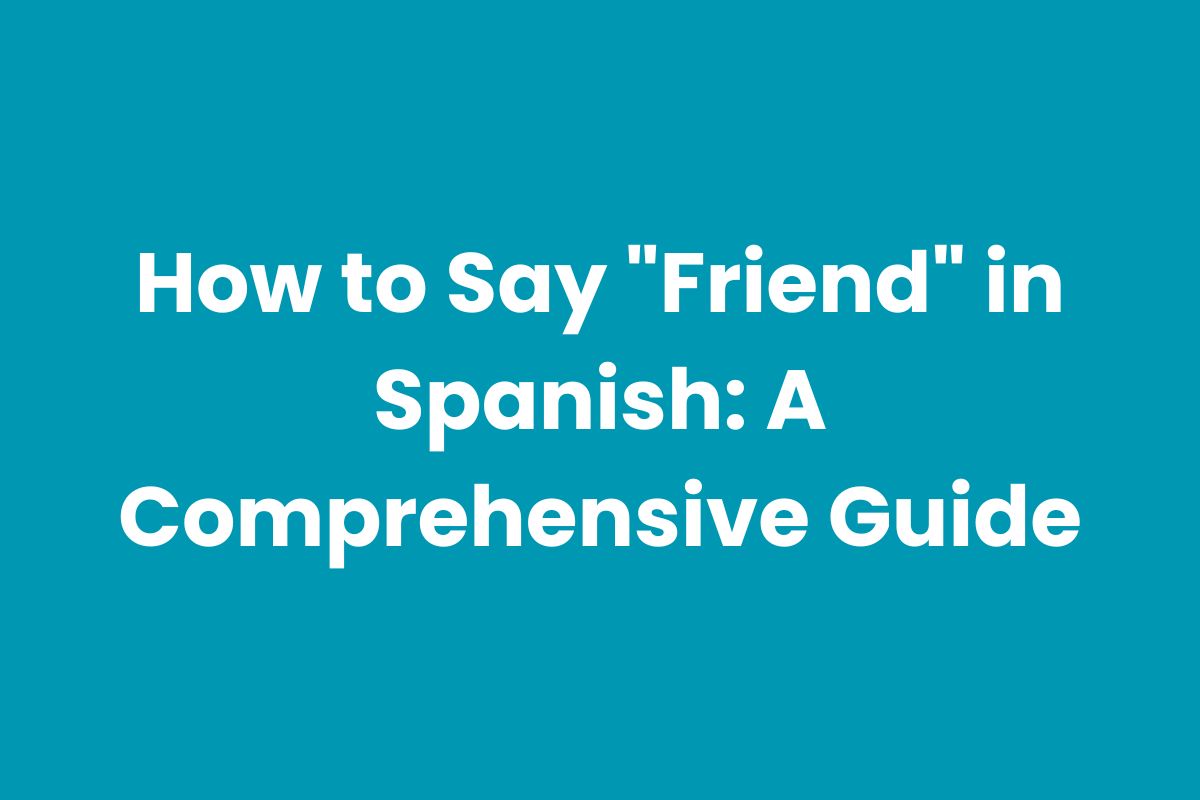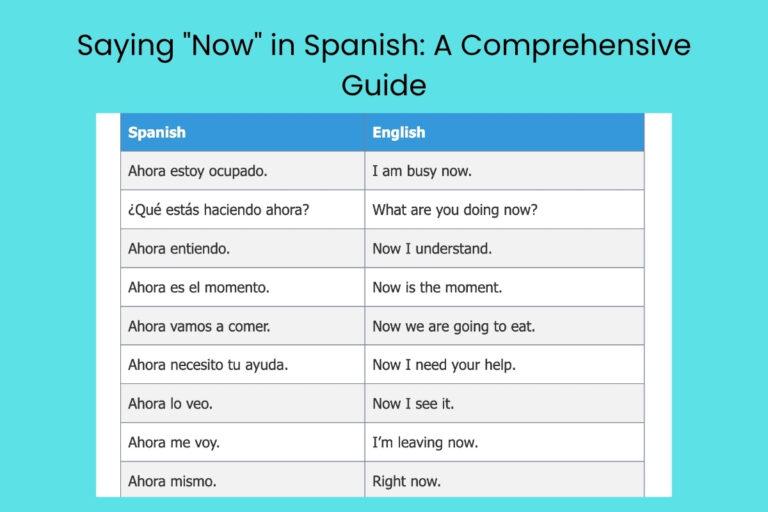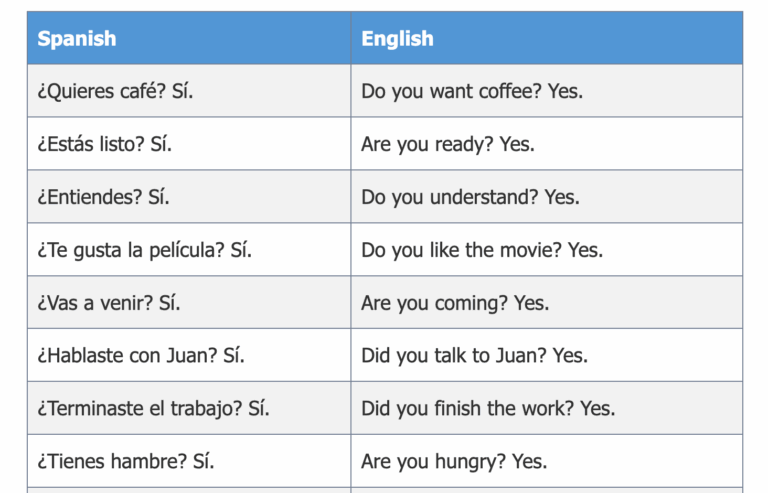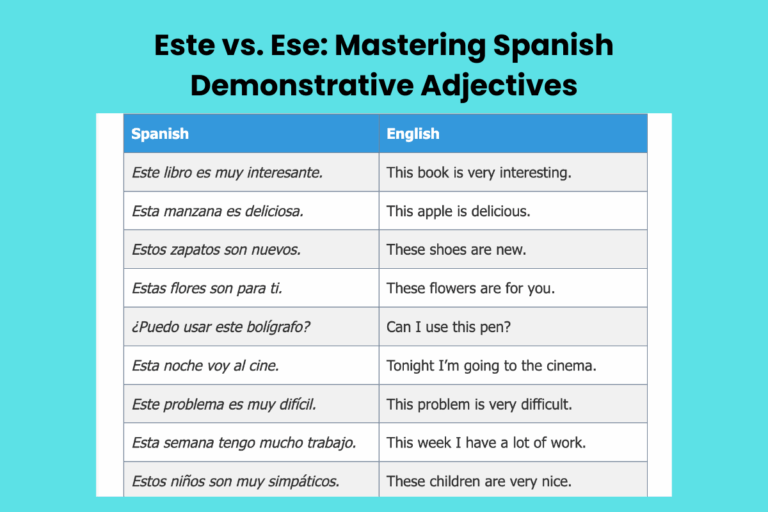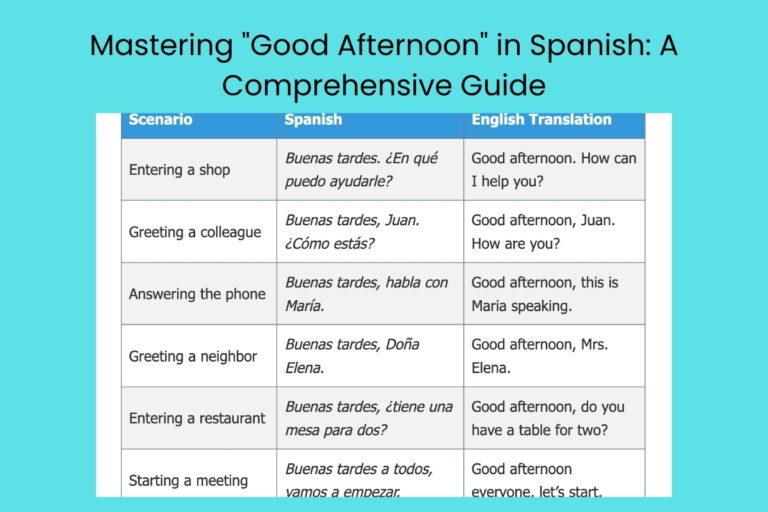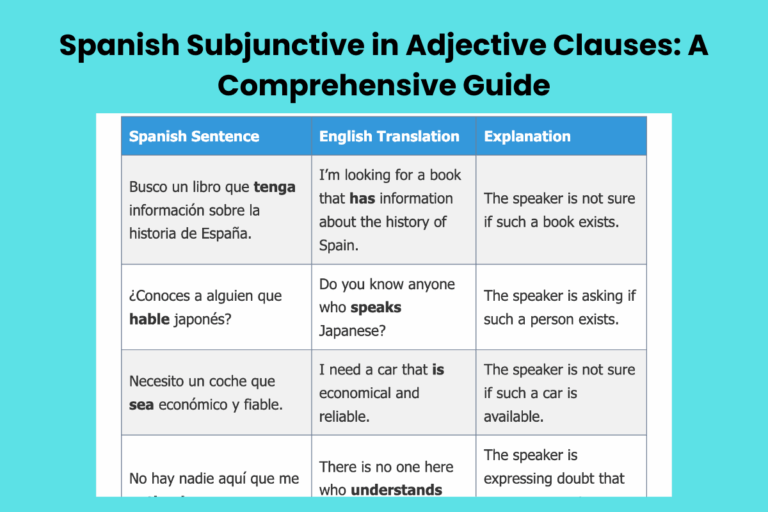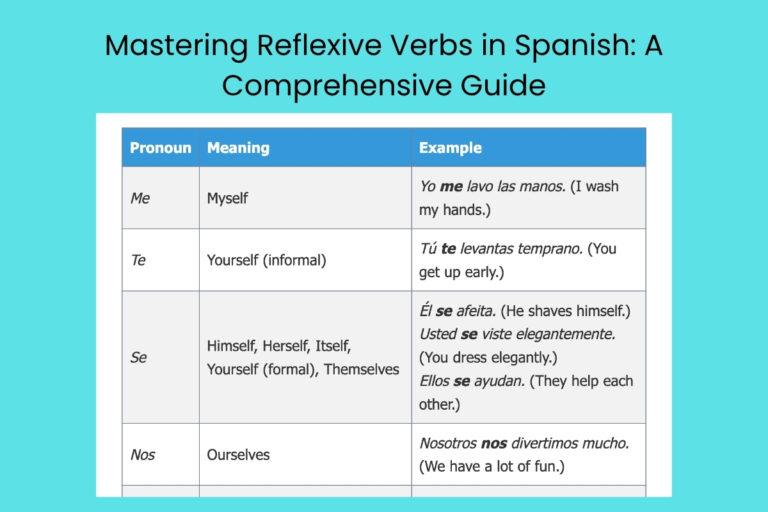How to Say “Friend” in Spanish: A Comprehensive Guide
Understanding how to say “friend” in Spanish is crucial for building relationships and navigating social situations in Spanish-speaking environments. This seemingly simple word opens doors to deeper connections and more meaningful conversations.
Whether you’re a beginner or an advanced learner, mastering the nuances of expressing friendship in Spanish will significantly enhance your communicative abilities and cultural understanding. This guide provides a comprehensive overview of the various ways to say “friend” in Spanish, along with their specific contexts, usage rules, and common pitfalls.
It will benefit students, travelers, and anyone looking to improve their Spanish and build genuine connections with native speakers.
This article explores the different terms for “friend” in Spanish, examining their grammatical properties, regional variations, and cultural connotations. Through detailed explanations, practical examples, and engaging exercises, you’ll gain the confidence to express friendship authentically and appropriately.
By the end of this guide, you’ll be well-equipped to use the right word in the right situation, fostering stronger relationships and enriching your overall Spanish language experience.
Table of Contents
- Introduction
- Definition of “Friend” in Spanish
- Structural Breakdown
- Types and Categories of “Friend”
- Examples
- Usage Rules
- Common Mistakes
- Practice Exercises
- Advanced Topics
- FAQ
- Conclusion
Definition of “Friend” in Spanish
The most common translation of “friend” in Spanish is amigo (masculine) or amiga (feminine). However, the Spanish language offers a variety of other words to describe different types of friendships and relationships, each with its own nuances. The choice of word depends on the context, the level of intimacy, and regional variations.
The word amigo/amiga refers to someone with whom you share a bond of affection, trust, and mutual support. It implies a personal connection that goes beyond mere acquaintance. Other terms, such as colega or compañero/compañera, describe relationships based on shared activities or professional contexts, rather than deep emotional bonds. Understanding these distinctions is essential for choosing the appropriate term and conveying the intended meaning.
The term ‘friend’ can be a noun, referring to a person, or it can be used adjectivally, as in ‘friend request’. In Spanish, the equivalent of ‘friend request’ would be ‘solicitud de amistad’.
While the focus of this article is on the noun form of ‘friend’, it is helpful to understand that the concept of friendship extends beyond just the person.
Structural Breakdown
The words amigo and amiga are nouns. They follow standard Spanish grammatical rules for gender and number. Amigo is masculine, and amiga is feminine. To make them plural, you add an -s to the end of the word: amigos (masculine plural) and amigas (feminine plural). When referring to a mixed-gender group of friends, the masculine plural form (amigos) is generally used.
Here’s a table summarizing the grammatical forms:
| Form | Gender | Number | Example |
|---|---|---|---|
| Amigo | Masculine | Singular | Él es mi amigo. (He is my friend.) |
| Amiga | Feminine | Singular | Ella es mi amiga. (She is my friend.) |
| Amigos | Masculine (or mixed) | Plural | Ellos son mis amigos. (They are my friends.) |
| Amigas | Feminine | Plural | Ellas son mis amigas. (They are my friends.) |
Most other terms for “friend” in Spanish follow similar grammatical rules. They have masculine and feminine forms, and they are pluralized by adding an -s or -es to the end of the word, depending on the ending of the singular form.
Types and Categories of “Friend”
Spanish offers several ways to express the concept of “friend,” each with its own specific connotation and usage. Here’s a breakdown of the most common terms:
Amigo/Amiga
Amigo/Amiga is the most common and versatile translation of “friend.” It’s used to describe someone with whom you have a close, personal relationship. This term implies trust, affection, and mutual support. It can be used in a wide range of contexts, from casual conversations to more formal settings.
Colega
Colega refers to a colleague or someone you work with. While it can imply a friendly relationship, it primarily denotes a professional association. It’s typically used in workplace settings to describe coworkers or business partners.
Compañero/Compañera
Compañero/Compañera is similar to colega but can also refer to someone you share an activity with, such as a classmate or teammate. It suggests a shared experience or common interest. The relationship is often less personal than that of amigo/amiga.
Conocido/Conocida
Conocido/Conocida means “acquaintance.” It describes someone you know but with whom you don’t have a close relationship. It’s a more formal term than amigo/amiga and implies a less intimate connection.
Pana
Pana is a colloquial term for “friend” used in some Latin American countries, particularly Venezuela and Panama. It is similar to “buddy” or “mate” in English and conveys a sense of camaraderie and informality.
Cuate
Cuate is a slang term for “friend” used in Mexico. It’s similar to “pal” or “dude” in English and is typically used among young people or in informal settings. It implies a close, casual friendship.
Parcero/Parcera
Parcero/Parcera is a slang term for “friend” used in Colombia. It’s similar to “mate” or “bro” in English and is often used among close friends. It conveys a sense of familiarity and camaraderie.
Examples
Here are some examples of how to use the different terms for “friend” in Spanish, categorized for clarity.
Amigo/Amiga Examples
The following table provides examples of how to use “amigo/amiga” in various contexts. This is the most commonly used term and can be applied in a wide variety of situations, from casual chats to more formal introductions.
| Spanish | English |
|---|---|
| Ella es mi mejor amiga. | She is my best friend. |
| Somos amigos desde la infancia. | We have been friends since childhood. |
| Quiero presentarte a mi amigo Juan. | I want to introduce you to my friend Juan. |
| Necesito hablar con un amigo. | I need to talk to a friend. |
| Él siempre ha sido un buen amigo para mí. | He has always been a good friend to me. |
| Salí con mis amigos anoche. | I went out with my friends last night. |
| ¿Tienes muchos amigos aquí? | Do you have many friends here? |
| Mi amiga me ayudó con mi tarea. | My friend helped me with my homework. |
| Es importante tener amigos en la vida. | It’s important to have friends in life. |
| Voy a visitar a mis amigos en España. | I’m going to visit my friends in Spain. |
| ¿Puedo traer a un amigo a la fiesta? | Can I bring a friend to the party? |
| Ella es una amiga muy leal. | She is a very loyal friend. |
| Siempre cuento con mis amigos. | I always count on my friends. |
| Mis amigos me hacen reír. | My friends make me laugh. |
| Estoy agradecido por mis amigos. | I am grateful for my friends. |
| ¿Quieres ser mi amigo? | Do you want to be my friend? |
| Somos amigos para siempre. | We are friends forever. |
| Mi amigo y yo vamos al cine. | My friend and I are going to the movies. |
| Ella es una gran amiga. | She is a great friend. |
| Mis amigos son mi familia. | My friends are my family. |
| Quiero pasar tiempo con mis amigos. | I want to spend time with my friends. |
| Mis amigos me apoyan en todo. | My friends support me in everything. |
| Ella es una amiga increíble. | She is an incredible friend. |
| Necesito el consejo de un amigo. | I need a friend’s advice. |
| Voy a presentarles a mis amigos. | I’m going to introduce you to my friends. |
Colega Examples
The following table shows how to use “colega” in professional settings. It is important to remember that this term is most appropriate for talking about coworkers or business associates.
| Spanish | English |
|---|---|
| Él es mi colega de trabajo. | He is my work colleague. |
| Tengo una reunión con mis colegas. | I have a meeting with my colleagues. |
| Mi colega y yo trabajamos en el mismo proyecto. | My colleague and I work on the same project. |
| Es un placer trabajar con mis colegas. | It’s a pleasure to work with my colleagues. |
| Mis colegas son muy profesionales. | My colleagues are very professional. |
| Voy a almorzar con un colega. | I’m going to have lunch with a colleague. |
| Necesito la ayuda de un colega. | I need the help of a colleague. |
| Mis colegas y yo celebramos el éxito del proyecto. | My colleagues and I celebrated the success of the project. |
| ¿Conoces a mis colegas? | Do you know my colleagues? |
| Ella es una colega muy talentosa. | She is a very talented colleague. |
| Mis colegas me apoyan en mi trabajo. | My colleagues support me in my work. |
| El respeto entre colegas es importante. | Respect among colleagues is important. |
| Mis colegas son muy amables. | My colleagues are very kind. |
| Trabajo en equipo con mis colegas. | I work in a team with my colleagues. |
| Mis colegas y yo vamos a una conferencia. | My colleagues and I are going to a conference. |
| Ella es una colega muy eficiente. | She is a very efficient colleague. |
| Mis colegas me inspiran a ser mejor. | My colleagues inspire me to be better. |
| Voy a presentarles a mis colegas. | I’m going to introduce you to my colleagues. |
| Mis colegas son muy dedicados. | My colleagues are very dedicated. |
| El ambiente de trabajo con mis colegas es bueno. | The work environment with my colleagues is good. |
| Mis colegas me dan buenos consejos. | My colleagues give me good advice. |
| Ella es una colega muy respetada. | She is a very respected colleague. |
| Mis colegas y yo colaboramos en muchos proyectos. | My colleagues and I collaborate on many projects. |
| Voy a aprender mucho de mis colegas. | I’m going to learn a lot from my colleagues. |
Compañero/Compañera Examples
The following table illustrates the use of “compañero/compañera” to describe classmates, teammates, or others with whom you share activities. This term implies a shared experience rather than a deep personal connection.
| Spanish | English |
|---|---|
| Él es mi compañero de clase. | He is my classmate. |
| Ella es mi compañera de equipo. | She is my teammate. |
| Mis compañeros y yo estudiamos juntos. | My classmates and I study together. |
| Tengo buenos compañeros de trabajo. | I have good work companions. |
| Es un placer tenerlos como compañeros. | It’s a pleasure to have them as companions. |
| Necesito hablar con mi compañero de proyecto. | I need to talk to my project partner. |
| Mis compañeros me ayudan a mejorar. | My companions help me to improve. |
| Vamos a celebrar con nuestros compañeros. | We are going to celebrate with our companions. |
| ¿Conoces a mis compañeros de clase? | Do you know my classmates? |
| Ella es una compañera muy dedicada. | She is a very dedicated companion. |
| Mis compañeros me apoyan en mis estudios. | My companions support me in my studies. |
| Trabajo en equipo con mis compañeros. | I work in a team with my companions. |
| Mis compañeros y yo participamos en un evento. | My companions and I participate in an event. |
| Ella es una compañera muy confiable. | She is a very reliable companion. |
| Mis compañeros me inspiran a ser mejor estudiante. | My companions inspire me to be a better student. |
| Voy a presentarles a mis compañeros. | I’m going to introduce you to my companions. |
| Mis compañeros son muy amables. | My companions are very kind. |
| El ambiente con mis compañeros es bueno. | The environment with my companions is good. |
| Mis compañeros me dan buenos consejos sobre la tarea. | My companions give me good advice on homework. |
| Ella es una compañera muy respetada en la clase. | She is a very respected companion in the class. |
| Mis compañeros y yo colaboramos en varios proyectos. | My companions and I collaborate on various projects. |
| Voy a aprender mucho de mis compañeros. | I’m going to learn a lot from my companions. |
| Él es mi compañero de cuarto. | He is my roommate. |
| Ella es mi compañera de viaje. | She is my travel companion. |
Conocido/Conocida Examples
The following table demonstrates the use of “conocido/conocida” to refer to acquaintances. This term is used for people you know but are not close to.
| Spanish | English |
|---|---|
| Es solo un conocido. | He is just an acquaintance. |
| Tengo varios conocidos en la ciudad. | I have several acquaintances in the city. |
| Lo conozco, pero no somos amigos, solo conocidos. | I know him, but we are not friends, just acquaintances. |
| Ella es una conocida de mi hermana. | She is an acquaintance of my sister. |
| Es un conocido del trabajo. | He is a work acquaintance. |
| No es mi amigo, solo un conocido. | He is not my friend, just an acquaintance. |
| Tengo muchos conocidos en la industria. | I have many acquaintances in the industry. |
| Ella es una conocida de la familia. | She is a family acquaintance. |
| Es un conocido del gimnasio. | He is a gym acquaintance. |
| No lo conozco bien, solo es un conocido. | I don’t know him well, he is just an acquaintance. |
| Tengo algunos conocidos en la universidad. | I have some acquaintances at the university. |
| Ella es una conocida de la escuela. | She is a school acquaintance. |
| Es un conocido del barrio. | He is a neighborhood acquaintance. |
| No tenemos una relación cercana, solo somos conocidos. | We don’t have a close relationship, we are just acquaintances. |
| Tengo varios conocidos en mi red profesional. | I have several acquaintances in my professional network. |
| Ella es una conocida de un amigo. | She is an acquaintance of a friend. |
| Es un conocido de mi padre. | He is an acquaintance of my father. |
| No confiaria en un conocido con mis secretos. | I wouldn’t trust an acquaintance with my secrets. |
| Tengo muchos conocidos en la iglesia. | I have many acquaintances in the church. |
| Ella es una conocida de un vecino. | She is an acquaintance of a neighbor. |
Regional Variations Examples
The following table presents examples of regional variations in the terms for “friend,” focusing on “pana,” “cuate,” and “parcero/parcera.” These terms are specific to certain Latin American countries and add local color to your Spanish.
| Term | Spanish | English | Region |
|---|---|---|---|
| Pana | ¿Qué tal, pana? | What’s up, buddy? | Venezuela, Panama |
| Pana | Ese pana es muy buena gente. | That buddy is a very good person. | Venezuela, Panama |
| Cuate | ¡Órale, cuate! | Hey, dude! | Mexico |
| Cuate | Es mi cuate desde la secundaria. | He’s been my pal since high school. | Mexico |
| Parcero | ¿Qué más, parcero? | What’s up, bro? | Colombia |
| Parcera | Ella es mi parcera. | She is my mate. | Colombia |
| Pana | Vamos, pana, no te rindas. | Come on, buddy, don’t give up. | Venezuela, Panama |
| Cuate | Ese cuate siempre me hace reír. | That dude always makes me laugh. | Mexico |
| Parcero | Vamos a salir, parcero. | Let’s go out, bro. | Colombia |
| Parcera | Mi parcera me apoya en todo. | My mate supports me in everything. | Colombia |
| Pana | Es un pana de confianza. | He is a trustworthy buddy. | Venezuela, Panama |
| Cuate | Ese cuate es muy inteligente. | That dude is very intelligent. | Mexico |
Usage Rules
When using the different terms for “friend” in Spanish, it’s important to consider the context, the level of intimacy, and regional variations. Amigo/Amiga is the most versatile and can be used in most situations. Colega and Compañero/Compañera are best suited for professional or shared activity contexts. Conocido/Conocida is used for acquaintances. Regional terms like Pana, Cuate, and Parcero/Parcera should be used in the appropriate regions and among people who understand the slang.
Gender agreement is crucial. Use amigo for male friends and amiga for female friends. Similarly, use the correct gender form for compañero/compañera and conocido/conocida. When referring to a mixed-gender group, use the masculine plural form (amigos, compañeros, conocidos).
Formality also plays a role. Amigo/Amiga can be used in both formal and informal settings, while terms like Pana, Cuate, and Parcero/Parcera are strictly informal. Conocido/Conocida is more formal than amigo/amiga and is used when you want to emphasize the lack of a close relationship.
When in doubt, stick with amigo/amiga. It’s the safest and most widely understood term for “friend” in Spanish.
Common Mistakes
One common mistake is using the wrong gender form of the word. Remember to use amigo for male friends and amiga for female friends. Another mistake is using colega or compañero/compañera when you mean a close friend. These terms imply a professional or shared activity relationship, not a deep personal connection.
Another common mistake is using regional slang terms in inappropriate contexts or with people who don’t understand them. For example, using Cuate in Spain might confuse people, as it’s primarily used in Mexico.
Here’s a table illustrating some common mistakes and their corrections:
| Incorrect | Correct | Explanation |
|---|---|---|
| Ella es mi amigo. | Ella es mi amiga. | Gender agreement: Use amiga for female friends. |
| Él es mi amiga. | Él es mi amigo. | Gender agreement: Use amigo for male friends. |
| Es mi colega, mi mejor amigo. | Es mi amigo, mi mejor amigo. | Colega implies a professional relationship, not a close friendship. |
| Tengo muchos cuates en España. | Tengo muchos amigos en España. | Cuate is a Mexican slang term and might not be understood in Spain. |
| Mi conocido es mi mejor amigo. | Mi amigo es mi mejor amigo. | Conocido implies a lack of a close relationship. |
Practice Exercises
Test your understanding of the different terms for “friend” in Spanish with these exercises.
Exercise 1: Fill in the Blanks
Fill in the blanks with the appropriate word: amigo/amiga, colega, compañero/compañera, or conocido/conocida.
| Question | Answer |
|---|---|
| 1. Ella es mi ________ de trabajo. | colega |
| 2. Él es mi ________ desde la infancia. | amigo |
| 3. Es solo un ________, no lo conozco bien. | conocido |
| 4. Somos ________ de clase. | compañeros |
| 5. Ella es mi mejor ________. | amiga |
| 6. Necesito hablar con un ________. | amigo/colega/compañero |
| 7. Es un ________ del gimnasio. | conocido |
| 8. Mis ________ y yo estudiamos juntos. | compañeros |
| 9. Es mi ________ de confianza. | amigo |
| 10. Es un ________ de la familia. | conocido |
Exercise 2: Translation
Translate the following sentences into Spanish, using the appropriate term for “friend.”
| English | Spanish |
|---|---|
| 1. He is my best friend. | Él es mi mejor amigo. |
| 2. She is my work colleague. | Ella es mi colega de trabajo. |
| 3. We are classmates. | Somos compañeros de clase. |
| 4. He is just an acquaintance. | Es solo un conocido. |
| 5. I’m going out with my friends. | Voy a salir con mis amigos. |
| 6. She is a very loyal friend. | Ella es una amiga muy leal. |
| 7. My colleagues are very professional. | Mis colegas son muy profesionales. |
| 8. I need to talk to a friend. | Necesito hablar con un amigo. |
| 9. They are my teammates. | Ellos son mis compañeros de equipo. |
| 10. I have many acquaintances in the city. | Tengo muchos conocidos en la ciudad. |
Exercise 3: Contextual Choice
Choose the most appropriate term for “friend” in each context.
| Context | Options | Answer |
|---|---|---|
| Introducing someone you work with. | Amigo, Colega, Conocido | Colega |
| Referring to someone you’ve known since childhood. | Amigo, Compañero, Conocido | Amigo |
| Describing someone you know but aren’t close to. | Amigo, Colega, Conocido | Conocido |
| Referring to someone you study with. | Amigo, Compañero, Colega | Compañero |
| Describing someone you trust and confide in. | Amigo, Conocido, Compañero | Amigo |
| Referring to a coworker you are friendly with. | Amigo, Colega, Conocido | Colega |
| Describing someone on your sports team. | Amigo, Compañero, Conocido | Compañero |
| Introducing a close personal contact. | Amigo, Conocido, Colega | Amigo |
| Talking about someone you met recently and only know superficially. | Amigo, Conocido, Compañero | Conocido |
| Referring to someone you share a close bond with. | Amigo, Colega, Compañero | Amigo |
Advanced Topics
For advanced learners, understanding idiomatic expressions and the use of diminutives and augmentatives can add depth to your understanding of “friend” in Spanish.
Idiomatic Expressions
There are many idiomatic expressions in Spanish that use the word “amigo.” For example, “ser uña y carne” (to be like fingernail and flesh) means to be very close friends. “Amigo de boquilla” (mouth friend) refers to someone who pretends to be your friend but is not sincere.
Understanding these expressions requires cultural knowledge and can
add richness to your conversations. Here are a few examples:
| Idiomatic Expression | Meaning | Example |
|---|---|---|
| Ser uña y carne | To be like fingernail and flesh (very close friends) | Juan y María son uña y carne. (Juan and Maria are like fingernail and flesh.) |
| Amigo de boquilla | Mouth friend (someone who pretends to be your friend) | No confíes en él, es solo un amigo de boquilla. (Don’t trust him, he’s just a mouth friend.) |
| Más vale un buen amigo que cien parientes | A good friend is worth more than a hundred relatives | Siempre me ayuda, más vale un buen amigo que cien parientes. (He always helps me, a good friend is worth more than a hundred relatives.) |
| A buen amigo, buen abrigo | A good friend is a good shelter | En tiempos difíciles, a buen amigo, buen abrigo. (In difficult times, a good friend is a good shelter.) |
| El amigo de todos no es amigo de nadie | A friend to all is a friend to none | Siempre quiere agradar a todos, pero el amigo de todos no es amigo de nadie. (He always wants to please everyone, but a friend to all is a friend to none.) |
Diminutives and Augmentatives
Diminutives (-ito, -ita, -illo, -illa) are used to express affection or to make a word smaller or less significant. Augmentatives (-ón, -ona, -azo, -aza) are used to make a word larger or more significant.
For example, amiguito/amiguita means “little friend” or “dear friend.” Amigote or amigazo/amigaza means “big friend” or “great friend,” often implying a strong, close friendship. These forms add emotional nuance to your language.
| Form | Meaning | Example |
|---|---|---|
| Amiguito/Amiguita | Little friend, dear friend | Mi amiguita me regaló un dulce. (My little friend gave me a candy.) |
| Amigote/Amigazo/Amigaza | Big friend, great friend | Es un amigazo, siempre está ahí para mí. (He’s a great friend, he’s always there for me.) |
| Coleguita | Little colleague, dear colleague | Mi Coleguita me ayudó con el informe. (My little colleague helped me with the report.) |
| Compañerito/Compañerita | Little companion, dear companion | Mi compañerita me prestó su lápiz. (My little companion lent me her pencil.) |
FAQ
How do you say “best friend” in Spanish?
The most common way to say “best friend” in Spanish is mejor amigo (masculine) or mejor amiga (feminine).
Is “pana” used in all Spanish-speaking countries?
No, “pana” is primarily used in Venezuela and Panama. Other countries have their own slang terms for “friend.”
Can I use “colega” to refer to a close friend?
While you can be friendly with your colleagues, “colega” primarily refers to a professional relationship. Use “amigo/amiga” for close friends.
What’s the difference between “compañero” and “amigo”?
“Compañero” refers to someone you share an activity with, like a classmate or teammate. “Amigo” implies a deeper personal connection with trust and affection.
How do I address a group of male and female friends?
Use the masculine plural form “amigos” to address a mixed-gender group of friends.
Is it rude to call someone a “conocido”?
It’s not necessarily rude, but it emphasizes that you don’t have a close relationship with the person. Use it when you want to make that distinction clear.
Are diminutives always appropriate to use?
While diminutives are generally used to express affection, it’s important to consider your relationship with the person and the context. Overusing diminutives can sound childish or insincere.
Conclusion
Understanding the different ways to say “friend” in Spanish is essential for effective communication and building meaningful relationships. While amigo/amiga is the most common and versatile term, knowing other options like colega, compañero/compañera, and regional variations like pana, cuate, and parcero/parcera allows you to express yourself more accurately and authentically.
By mastering the usage rules, avoiding common mistakes, and practicing with the exercises provided, you’ll be well-equipped to navigate social situations and express friendship in Spanish with confidence. Remember to consider the context, the level of intimacy, and regional variations when choosing the appropriate term. ¡Buena suerte y que hagas muchos amigos!

